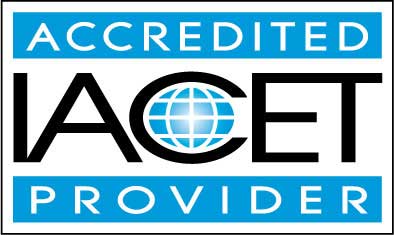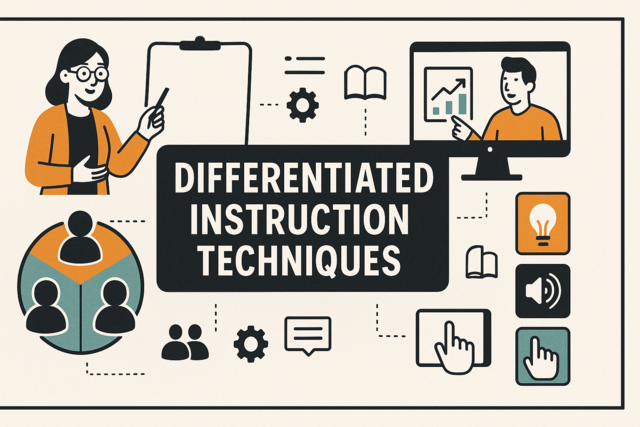Online Class: Introduction to Networking Concepts

no certificate
with CEU Certificate*
-
15Lessons
-
22Exams &
Assignments -
3Hours
average time -
0.3CEUs
Course Description
In the digital age, where connectivity is the linchpin of personal and professional success, understanding the intricacies of networking is not just valuable—it's imperative. Welcome to "Introduction to Networking Concepts," the gateway to mastering the digital world and unlocking a plethora of opportunities in technology and beyond. This course isn't just an online class; it's a transformative journey designed to elevate your understanding of networking from foundational knowledge to real-world application.
Imagine being empowered with the ability to design, troubleshoot, and innovate in the digital networks that sustain modern life. From the smallest home network configurations to the sprawling, complex infrastructures that drive multinational corporations, the mastery of networking unlocks a universe of potential. Our course guides you through this universe with precision, clarity, and practical insight, ensuring you're not just familiar with networking concepts but are fluent in their application.
Networking is more than a technical skill; it's the art and science of building bridges in a digital world. In this course, we explore the indelible impact of networks on education, business, and global connectivity. We'll delve into the systems that connect cities, countries, and continents, and you'll uncover how these unseen infrastructures hold our world together. As you progress, you'll gain an appreciation for the elegance and complexity of network structures—from Local Area Networks (LANs) that foster communication within offices to wide-reaching Metropolitan Area Networks (MANs) that underpin entire cities.
In a rapidly evolving digital landscape, understanding networking protocols is paramount. Discover the transformative advancements in network management, as we demystify the protocols that are at the heart of digital connectivity. Our exploration of IPv6 and HTTP/3 doesn't just highlight technological evolution; it prepares you to thrive amidst the challenges of address scarcity and security, ensuring you're always a step ahead in a competitive field.
But theoretical knowledge is just the beginning. This course transforms theory into practice, equipping you with the skills to build efficient, resilient networks. You'll dive into the core mechanics of routers and switches, learning how to optimize data flow in sophisticated environments akin to orchestrating traffic in a smart city. With this knowledge, you'll be able to innovate within organizations, strategically aligning their networks to bolster productivity and foster growth.
As you gain expertise in subnetting and IP management, you'll develop a comprehensive understanding of the future-readiness of networks. You'll conquer the intricacies of IPv6 and imagine a world where digital addresses are limitless—a world you're primed to navigate and lead. The course's focus on network resilience ensures you can tackle even the most complex mergers and expansions with confidence, using advanced metrics to streamline processes and stabilize connectivity.
Of course, no discussion of networking is complete without addressing security. You'll learn how to construct a robust digital fortress, protecting vital information and ensuring the integrity of data flow in an interconnected world. This isn't merely an exercise in installing firewalls or configuring antivirus software; it's about instilling a mindset of proactive security, safeguarding your life and career in an era of cybersecurity threats.
In "Introduction to Networking Concepts," you're doing more than learning about interconnected systems—you're stepping into a role where you can influence and innovate. From understanding the backbone of the internet to employing cloud architecture for scalable solutions, the course is your passage to becoming a pivotal player in the ongoing digital revolution.
Enrolling in this course is your first step toward becoming a leader in the digital world. With practical insights, real-world applications, and an engaging journey into the heart of networking, you're investing in a skill set that is as essential as it is exciting. Seize this opportunity to not only understand the networks that connect us but to become a catalyst for the innovation and development that will shape our future. Jump in, and transform your aspirations into accomplishments with "Introduction to Networking Concepts." Your digital journey begins here.
- Completely Online
- Self-Paced
- 6 Months to Complete
- 24/7 Availability
- Start Anytime
- PC & Mac Compatible
- Android & iOS Friendly
- Accredited CEUs

Course Lessons
Lesson 1. Mastering the Core Concepts of Networking
Grasping network structure, such as LANs connecting devices in close proximity, empowers educational and business environments. WANs and MANs facilitate broader communication, while network infrastructure like fiber optic cables sustain global links.Lesson 2. Topologies: Laying the Digital Framework
Logical topologies and advancements like SDN transform traditional configurations and adapt to real-time fluctuations, promoting agile network management. By blending logical and physical topologies, organizations can dynamically align networks with strategic targets.Lesson 3. Protocols: The Unseen Architects of Digital Connectivity
Modern technologies shift towards robust protocols addressing challenges like address scarcity and security, with IPv6 and HTTP/3 leading advancements. By comprehending these evolutions, individuals adapt to technological landscapes, ensuring proficient and secure digital interactions.Lesson 4. Navigating Subnets and IP Management
The introduction of IPv6, accommodating over 340 undecillion addresses, resolves the IPv4 scarcity problem by offering a substantial 128-bit address space. This transition echoes the urgency to support the future digital landscape while enhancing security and routing efficiency within networks.Lesson 5. Building Efficient Networks: Routers, Switches, and Hubs Explained
Switches are pivotal for network segmentation, ensuring data reaches its intended recipient, thus optimizing bandwidth and preventing network overloads. Modern switches incorporate energy-efficient protocols and dynamic traffic management, resembling smart city systems that maintain order and efficiency in urban traffic.Lesson 6. Network Resilience Through EIGRP Innovation
EIGRP’s advanced metrics enable effective route management during corporate mergers, enhancing network stability with streamlined route sharing. Its capacity for backup routes and minimal traffic makes it ideal for bandwidth-sensitive, large-scale networks, as it dispatches updates only upon changes.Lesson 7. Switches and Their Role in Efficient Data Transmission
Switching plays a pivotal role in modern networking by directing data packets efficiently in a LAN, using intelligent path optimization similar to coordinated traffic lights. Managed switches offer advanced features such as VLANs and enhanced security, catering to complex network environments, unlike simpler unmanaged switches.Lesson 8. The Backbone of Modern Connectivity: Navigating Wireless Technologies
At the core of wireless networking is the ability to transmit data via radio frequencies, allowing devices to connect without physical cables. Technologies like Wi-Fi and Bluetooth, among others, illustrate the critical role wireless solutions play in modern society's personal, professional, and infrastructural connectivity.Lesson 9. Essentials of Network Security: Building a Robust Digital Fortress
To thrive in our digitally connected society, understanding network security's foundational aspects—confidentiality, integrity, and availability—is imperative. Tools like firewalls, antivirus software, and access controls enable individuals to navigate and secure complex network environments, contributing to a safer digital world.Lesson 10. Resolving Slow Network and Connectivity Problems Efficiently
Intermittent connectivity issues often arise from wireless interference or damaged cables, requiring strategic analysis with Wi-Fi spectrum analyzers and cable inspections. Implementing dual-band routers and verifying equipment integrity can mitigate these connectivity disruptions effectively.Lesson 11. Mastering Cable Choices for Superior Network Performance
Fiber optic cables support high-speed data transmission over long distances while advancements like bend-insensitive fibers make them more adaptable for diverse uses. Networking professionals must balance cost, performance, and environmental conditions when choosing between cable types like twisted-pair, coaxial, and fiber optics.Lesson 12. The Internet of Things: Bridging the Physical and Digital Worlds
The Internet of Things (IoT) is revolutionizing how we interact with technology by embedding everyday objects with connectivity and intelligence, enabling autonomous and efficient living. This transformation extends across industries like healthcare, agriculture, and urban management, highlighting the vast potential to enhance life worldwide.Lesson 13. From IP Addresses to Domain Names: Understanding the Backbone of the Internet
DNS and DHCP together form the backbone of digital communication, with DNS converting domain names into IP addresses and DHCP automating IP address allocation. This dynamic duo enhances network efficiency, supports device connectivity, and secures seamless access across digital environments.Lesson 14. Harnessing VPNs for Secure and Private Internet Use
The massive adoption of VPNs has led to energy considerations, prompting tech industries to seek greener solutions as data traffic increases. By optimizing data center efficiencies and leveraging renewable sources, the digital realm is embracing sustainability while striving to maintain a secure online environment.Lesson 15. The Revolutionary Leap of Cloud Architecture in Computing
Virtual networking drives cloud success, with components like VPCs, Cloud Load Balancers, and SDNs offering scalable and secure infrastructure. These technologies enhance real-time data processing and enable seamless global connectivity across diverse industries.
Learning Outcomes
- Define key networking terminologies and concepts, including LANs, WANs, and their roles in modern communication.
- Identify various network topologies, such as star, mesh, and tree, and describe their advantages and applications in real-world scenarios.
- Analyze the advantages and disadvantages of different network topologies and determine appropriate scenarios for their use.
- Design a network layout using a hybrid topology, incorporating elements from multiple topologies to optimize performance and reliability.
- Define the structure and function of OSI and TCP/IP network protocol models by categorizing each layer's role for data transmission and communication.
- Identify and compare the key characteristics and use cases of network protocols such as HTTP, HTTPS, FTP, and SMTP in facilitating different types of digital communication.
- Define the structure and function of IPv4 and IPv6 addresses, including their differences and roles in global IP communication.
- Explain the process and benefits of subnetting in IP address management and how subnet masks influence network and host identification.
- Define the functionalities of routers, switches, and hubs, and compare their roles in optimizing network connectivity and performance.
- Demonstrate the ability to configure wireless devices such as access points, extenders, and adapters to enhance network coverage and improve connectivity in a given environment.
- Demonstrate the ability to configure EIGRP in a simulated mixed-environment network and evaluate its performance in terms of IPv4/IPv6 handling and VLSM compatibility
- Recognize the advantages of EIGRP over RIP and OSPF by analyzing convergence speeds and routing efficiency using bandwidth, delay, load, and reliability metrics
- Define the roles and functionalities of managed and unmanaged switches within a local area network, including their impact on network performance and security.
- Demonstrate mastery of lesson content at levels of 70% or higher.
Additional Course Information

- Document Your Lifelong Learning Achievements
- Earn an Official Certificate Documenting Course Hours and CEUs
- Verify Your Certificate with a Unique Serial Number Online
- View and Share Your Certificate Online or Download/Print as PDF
- Display Your Certificate on Your Resume and Promote Your Achievements Using Social Media

Choose Your Subscription Plan
No Certificate / No CEUs
This course only
| Includes certificate | X |
| Includes CEUs | X |
| Self-paced |

|
| Instructor support |

|
| Time to complete | 6 months |
| No. of courses | 1 course |
Certificate & CEUs
This course only
| Includes certificate |

|
| Includes CEUs |

|
| Self-paced |

|
| Instructor support |

|
| Time to complete | 6 months |
| No. of courses | 1 course |
Certificates & CEUs
Includes all 600+ courses
| Includes certificate |

|
| Includes CEUs |

|
| Self-paced |

|
| Instructor support |

|
| Time to complete | 12 Months |
| No. of courses | 600+ |
Certificates & CEUs
Includes all 600+ courses
| Includes certificate |

|
| Includes CEUs |

|
| Self-paced |

|
| Instructor support |

|
| Time to complete | 24 Months |
| No. of courses | 600+ |
Related Courses
-
 7 hours
0.7 CEUs
The Renaissance of Relationship: Revitalizing Emotional Bonds
+ More Info
7 hours
0.7 CEUs
The Renaissance of Relationship: Revitalizing Emotional Bonds
+ More Info
-
 3 hours
0.3 CEUs
Advancements in Neurodivergent Education Methods
+ More Info
3 hours
0.3 CEUs
Advancements in Neurodivergent Education Methods
+ More Info
-
 7 hours
0.7 CEUs
Civic Education and Engagement
+ More Info
7 hours
0.7 CEUs
Civic Education and Engagement
+ More Info
-
 7 hours
0.7 CEUs
Guided Meditation Practices
+ More Info
7 hours
0.7 CEUs
Guided Meditation Practices
+ More Info
-
 3 hours
0.3 CEUs
Empowering Students through Self-Assessment
+ More Info
3 hours
0.3 CEUs
Empowering Students through Self-Assessment
+ More Info
-
 7 hours
0.7 CEUs
Advanced PowerPoint Presentation Skills
+ More Info
7 hours
0.7 CEUs
Advanced PowerPoint Presentation Skills
+ More Info
-
 4 hours
0.4 CEUs
Crossroads to Connection: The Intersection of Love and Logic
+ More Info
4 hours
0.4 CEUs
Crossroads to Connection: The Intersection of Love and Logic
+ More Info
-
 6 hours
0.6 CEUs
Productivity Tools for Modern Professionals
+ More Info
6 hours
0.6 CEUs
Productivity Tools for Modern Professionals
+ More Info
-
 5 hours
0.5 CEUs
The Relationship Reset: Rewriting Your Story Together
+ More Info
5 hours
0.5 CEUs
The Relationship Reset: Rewriting Your Story Together
+ More Info
-
 3 hours
0.3 CEUs
Luxury Layering: The Art of Dressing with Opulence
+ More Info
3 hours
0.3 CEUs
Luxury Layering: The Art of Dressing with Opulence
+ More Info
-
 4 hours
0.4 CEUs
Behavioral Interventions for Students with Asperger Syndrome
+ More Info
4 hours
0.4 CEUs
Behavioral Interventions for Students with Asperger Syndrome
+ More Info
-
 6 hours
0.6 CEUs
Culturally Responsive Teaching in Special Education
+ More Info
6 hours
0.6 CEUs
Culturally Responsive Teaching in Special Education
+ More Info
-
 6 hours
0.6 CEUs
Parenting in the Digital Age: Navigating New Norms
+ More Info
6 hours
0.6 CEUs
Parenting in the Digital Age: Navigating New Norms
+ More Info
-
 5 hours
0.5 CEUs
Setting and Maintaining Personal Priorities
+ More Info
5 hours
0.5 CEUs
Setting and Maintaining Personal Priorities
+ More Info
-
 6 hours
0.6 CEUs
Differentiated Instruction Techniques
+ More Info
6 hours
0.6 CEUs
Differentiated Instruction Techniques
+ More Info
-
 3 hours
0.3 CEUs
Designing STEM Curriculum
+ More Info
3 hours
0.3 CEUs
Designing STEM Curriculum
+ More Info
-
 5 hours
0.5 CEUs
Advanced Excel for Data Management
+ More Info
5 hours
0.5 CEUs
Advanced Excel for Data Management
+ More Info
-
 4 hours
0.4 CEUs
Beyond Words: The Silent Language of Relationships
+ More Info
4 hours
0.4 CEUs
Beyond Words: The Silent Language of Relationships
+ More Info
-
 6 hours
0.6 CEUs
Ethical Decision-Making in Business
+ More Info
6 hours
0.6 CEUs
Ethical Decision-Making in Business
+ More Info
-
 6 hours
0.6 CEUs
Intuitive Insights: Harnessing Gut Feelings for Better Bonds
+ More Info
6 hours
0.6 CEUs
Intuitive Insights: Harnessing Gut Feelings for Better Bonds
+ More Info
-
 5 hours
0.5 CEUs
Utilizing Data to Drive Instruction
+ More Info
5 hours
0.5 CEUs
Utilizing Data to Drive Instruction
+ More Info
-
 6 hours
0.6 CEUs
Assistive Communication Devices: Maximizing Potential
+ More Info
6 hours
0.6 CEUs
Assistive Communication Devices: Maximizing Potential
+ More Info
-
 6 hours
0.6 CEUs
Narrative Approaches in Education
+ More Info
6 hours
0.6 CEUs
Narrative Approaches in Education
+ More Info
-
 5 hours
0.5 CEUs
Empowering Student Voice through Leadership
+ More Info
5 hours
0.5 CEUs
Empowering Student Voice through Leadership
+ More Info
-
 4 hours
0.4 CEUs
Designing Experiential Learning Opportunities
+ More Info
4 hours
0.4 CEUs
Designing Experiential Learning Opportunities
+ More Info
-
 5 hours
0.5 CEUs
The Art of Listening: Creating Understanding in Relationships
+ More Info
5 hours
0.5 CEUs
The Art of Listening: Creating Understanding in Relationships
+ More Info
-
 6 hours
0.6 CEUs
Redefining Romance: Finding Love Beyond the Fairytale
+ More Info
6 hours
0.6 CEUs
Redefining Romance: Finding Love Beyond the Fairytale
+ More Info
-
 7 hours
0.7 CEUs
Style Sovereign: The Power of Personal Branding in Luxury Fashion
+ More Info
7 hours
0.7 CEUs
Style Sovereign: The Power of Personal Branding in Luxury Fashion
+ More Info
-
 7 hours
0.7 CEUs
Mastering Time Management for Professionals
+ More Info
7 hours
0.7 CEUs
Mastering Time Management for Professionals
+ More Info
-
 5 hours
0.5 CEUs
Family Dynamics and Trauma: Unraveling the Impact on Relationships
+ More Info
5 hours
0.5 CEUs
Family Dynamics and Trauma: Unraveling the Impact on Relationships
+ More Info
-
 7 hours
0.7 CEUs
Understanding Learning Disabilities: Strategies for Effective Teaching
+ More Info
7 hours
0.7 CEUs
Understanding Learning Disabilities: Strategies for Effective Teaching
+ More Info
-
 4 hours
0.4 CEUs
Emergency Preparedness and Survival Skills
+ More Info
4 hours
0.4 CEUs
Emergency Preparedness and Survival Skills
+ More Info
-
 6 hours
0.6 CEUs
Basic Gardening and Plant Care
+ More Info
6 hours
0.6 CEUs
Basic Gardening and Plant Care
+ More Info
-
 7 hours
0.7 CEUs
Building a Healthy Work Environment
+ More Info
7 hours
0.7 CEUs
Building a Healthy Work Environment
+ More Info
-
 6 hours
0.6 CEUs
Holistic Nutrition: Fueling Your Body and Mind
+ More Info
6 hours
0.6 CEUs
Holistic Nutrition: Fueling Your Body and Mind
+ More Info
-
 6 hours
0.6 CEUs
Conflict Resolution and Negotiation
+ More Info
6 hours
0.6 CEUs
Conflict Resolution and Negotiation
+ More Info
-
 4 hours
0.4 CEUs
Embracing Change: Adapting Family Roles Over Time
+ More Info
4 hours
0.4 CEUs
Embracing Change: Adapting Family Roles Over Time
+ More Info
-
 5 hours
0.5 CEUs
Advanced Pedagogical Techniques
+ More Info
5 hours
0.5 CEUs
Advanced Pedagogical Techniques
+ More Info
-
 7 hours
0.7 CEUs
Assistive Technology for Vision and Hearing Impairments
+ More Info
7 hours
0.7 CEUs
Assistive Technology for Vision and Hearing Impairments
+ More Info




